Contents
Something that makes motorcycles slightly different from other modes of transportation is that the bike’s weight can impact how safe they are to ride. Depending on factors such as your height and weight, how heavy or light a motorcycle is can be beneficial or hindering your safety.
Heavier motorcycles are better than lighter motorcycles. They have plenty of added features that make them superior to lighter bikes. These include the ability to go over obstacles in the road easier and keeping you safer in the event of a crash.
Heavier motorcycles are better for the experienced rider. But if you’re a newer cyclist looking for your first bike, there’s way more to consider than the weight of the motorcycle.
Are Heavier Motorcycles Safer?
Getting into an accident with any motorcycle isn’t going to guarantee that you or your bike will walk away without a scratch. But the bulkiness of a motorcycle can help better those odds.
Heavier motorcycles usually provide a better chance of surviving a crash than lighter motorcycles. The extra weight means that there’s more impact necessary to knock over. This makes it harder for the object you collided with to knock the bike over. It can prevent any severe damage to be caused to you and your bike.
Motorcycles that weigh more also handle inconsistencies in the road better. These can include:
- Bumps
- Cracks
- Gaps
- Potholes
Heavier motorcycles typically have wider tires that can easily ride over these hazards. This decreases the chances of your motorcycle going rogue while on the road. The increased control can help increase your chances of avoiding a crash that can be caused by the bike. While you should still be careful when encountering these on the road, heavier motorcycles can help keep you safe if they are unavoidable.
Crosswinds are another obstacle you can run into while riding. They are winds that go in the opposite direction of where you’re riding. Motorcycles are designed to be aerodynamic anyway, but the increased weight provides a greater counterweight to strong winds. This helps to maintain control of the motorcycle.
As far as speed goes, how fast a motorcycle will go isn’t affected by how much it weighs. But what is affected is how long the motorcycle will take to get up to top speed. Lighter bikes have an easier time getting up to speed since they have less weight to carry. Heavier bikes will take a little longer since there’s more weight to drag to that top speed. But once you get to there, you can go just as fast on a heavy bike as a lighter bike.
Are Heavier Motorcycles Harder to Ride?
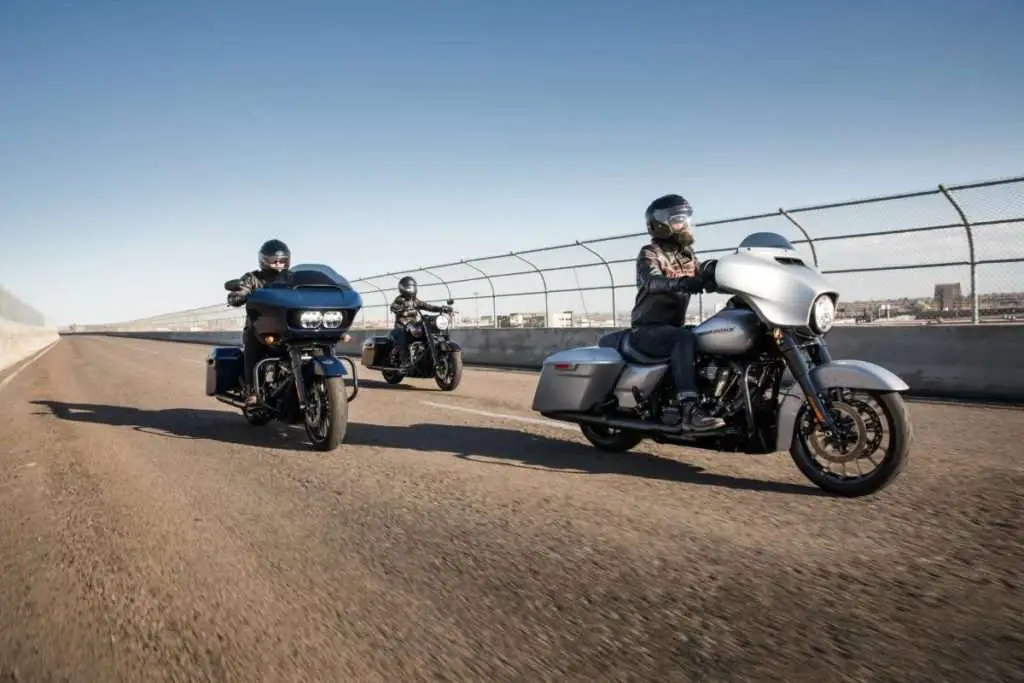
Even though heavier motorcycles provide many safety advantages compared to lighter bikes, they are harder to ride if you’re a beginning motorcyclist.
Heavier motorcycles require much more attention and concentration since you are handling more weight. Adding in driving the motorcycle in tight spaces and at slow speeds, your whole focus needs to be on where the bike is and how you’re going to get that amount of weight to its destination.
They should typically be ridden by motorcyclists that have had plenty of previous experience riding lighter bikes. If you are a new rider, starting with a motorcycle that requires an immense level of concentration might not be the best option.
How do you Handle Heavier Motorcycles?
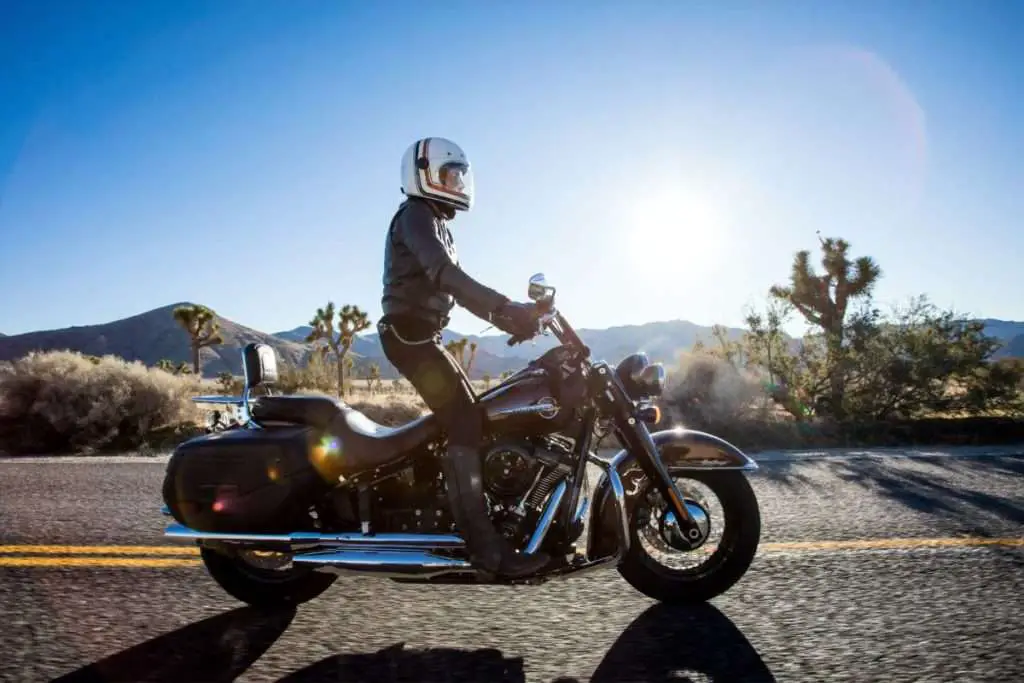
While heavier motorcycles can be harder to ride, there are a few ways to make learning to ride it and actually riding it an easier process.
Learn to Park the Motorcycle First
Learning to park a heavy motorcycle first can be a good way to learn how it works. It can help you get comfortable with how it moves and how much exertion you need to put forth to control it.
Try to find a parking space that’s flat and smooth. A space that isn’t slippery and has a slight uphill incline is preferable, but not required. The incline will prevent the bike from leaning over too far. This will save you from having to exert more effort to get upright again.
When you park the motorcycle, make sure you use the side stand. The side stand is a metal pole with a foot-shaped object on the end of it located near the bottom middle of your motorcycle. It’s similar to a kickstand that’s on a bike.
Once you become comfortable with parking it, learning how it works while stationary can help you learn how it might work while in motion. Some exercise you can do include:
- Maneuvering the handles from side to side
- Playing around with the clutch
- Pumping the brakes gently
Getting comfortable with the motorcycle while it’s in a safer position can help you be safer while on the road.
Handle the Brakes, Throttle and Clutch Carefully
Heavier bikes have to use a more powerful engine to get them up to speed. As a result, stopping quickly can cause the motorcycle to flip over and send you flying down the road. And not in an enjoyable way. The main components of the motorcycle you don’t want to put too much pressure on are the brakes, the throttle, and the clutch.
The brakes of a motorcycle perform the same function on any other mode of transportation; they stop it. When going at low speeds, you don’t need to use the front brakes to stop the motorcycle. If you do, it can cause the bike to become unbalanced and make the chances of crashing greater. You should gently apply the rear brakes to slow down. Put your foot on the ground to keep the bike upright when you stop completely.
The throttle of a motorcycle is the device that controls how much gas you’re putting into the engine. The more gas you feed into it, the faster you will go. If you put too much gas into the engine too quickly, then the motorcycle can speed out from underneath you. If too much is taken out too fast, then the motorcycle can come skidding to a stop and run the risk of crashing into something.
The clutch of a motorcycle is what makes the motorcycle stop and go. It’s connected to the engine and the transmission, both of which start-up and power the motorcycle. So, when the clutch is stopped too fast, the motorcycle can stop too fast and either start skidding or flip over.
Handling these parts of the motorcycle gently will make the stopping and going processes a lot smoother. It will keep all the weight from shifting to the front and making the motorcycle unbalanced.
Look Upwards While You’re Riding
Looking down at your bike isn’t going to help you with controlling it. Rather, it makes the chances of you running into something significantly higher.
Look up at the nearby traffic around you. This will help you make sure you have control over where you and your bike are and where you want to go. When you’re riding a motorcycle, you have to be extra alert since you don’t have the outer safety of a car or bus.
Turn the Motorcycle with Your Feet
When going at slow speeds, use your feet to help with steadying your turns. It’ll help keep the motorcycle from tipping over since they aren’t built to take turns at slow speeds.
When taking turns at faster speeds, use your right foot for right turns and your left foot for left turns. This means leaning more into the turn with the corresponding foot. This will help you get more leverage while turning a heavy motorcycle and make turning easier.
Sharp turns are the hardest with a heavy motorcycle. They give you less room and time to turn, but you also have to maneuver a heavy machine. To help with this, reduce your speed as you come up on the turn and lean into it cautiously. It might take a few tries to get it exactly right, so practicing turning with a heavy motorcycle is a good idea.
When taking any turn, always make sure you are sitting up straight. This will give you more control over the turn and the motorcycle and prevent you from losing control when you get out of the turn.
What is the average weight of a motorcycle?
Each motorcycle will weigh a different amount depending on a multitude of factors. Factors that can affect how much a motorcycle weighs include:
- The brand that made it
- Which model it is
- The size of the engine
- The style of the bike
A typical weight for a lighter bike is about 300-400 pounds. For example, a standard street motorcycle from a Honda dealership is about 340 pounds. But there are some heavier bikes that can weigh up to 500 pounds. However, this isn’t the heaviest a motorcycle can go.
A standard weight for a heavy motorcycle is about 600-900 pounds. Most of the heavier bikes on the market are made by Harley Davidson Motorcycles. If you want to get really extreme, motorcycles from this brand can weigh as much as 1,000 pounds.
On average, a good motorcycle that provides plenty of safety usually weighs about 700 pounds. If you are a shorter person or a beginning rider, you should start with a bike that weighs between 300 and 400 pounds.
Bigger or more experienced riders should go for a bike that weighs between 600 and 700 pounds. Motorcyclists that want a motorcycle that can travel long distances or fit a passenger should look for a bike that weighs somewhere between 900 and 1,000 pounds.
How much a motorcycle weighs can also depend on how much extra equipment you add to it.
Equipment You Can Add to a Motorcycle
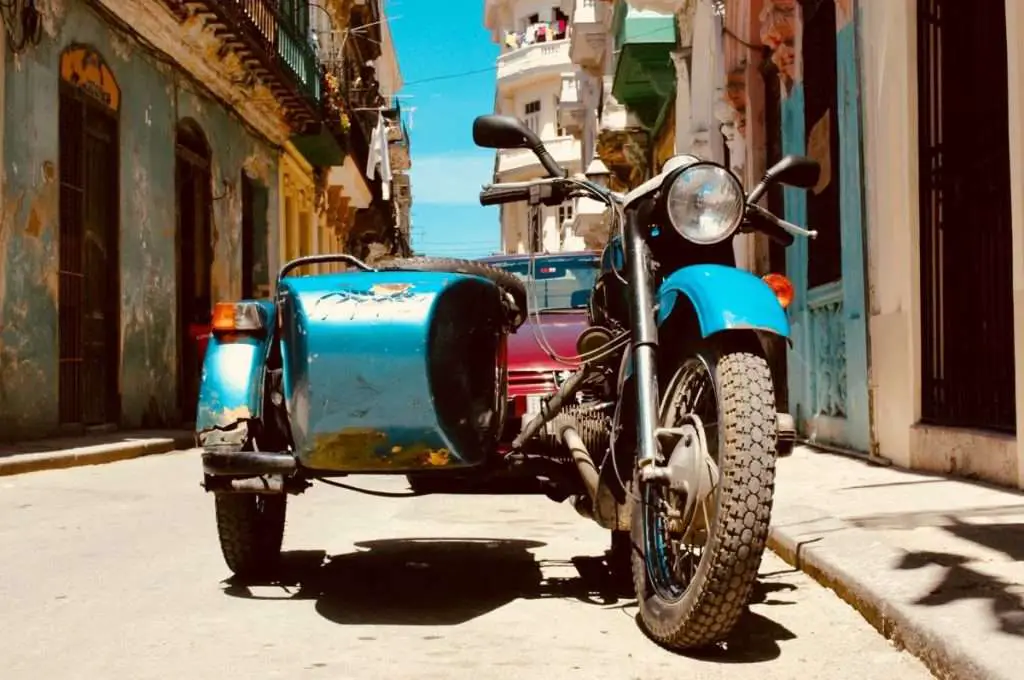
Added equipment is anything that you add to your motorcycle after you’ve purchased it. A few things that can add significant weight to your motorcycle are:
- Sidecar
- Side satchel
- Helmet
- Fairing
While these won’t add a significant amount of weight to your motorcycle individually, you do want to be smart about how much extra equipment you add. There is such a thing as a motorcycle being too heavy.
Adding a Sidecar
A sidecar is an extra addition you can attach to a motorcycle to increase the number of people that can ride on it. It usually only has one wheel and enough room to seat one person.
You can easily attach a sidecar to any motorcycle, but you will probably have to adjust your bike to take on the extra weight. Sidecars usually weigh between 300 and 400 pounds but adding too much weight onto your already heavy motorcycle can be hindering. A sidecar that is too heavy can throw off the balance of your bike. If the extra weight of a person is added to it, then it can become very dangerous.
Sidecars can also change the mechanics of the bike as well as the weight. For example, the addition of the sidecar eliminates the need to turn the motorcycle to one side with your feet too much. The sidecar is a natural counterweight and will help lean the motorcycle in the right direction. Contrarily, on the other side where the sidecar is absent, you’ll have to turn a little harder into the turn because of the sidecar’s counterweight.
Motorcycle Side Satchels
A side satchel is a fairly large bag that you can carry on your side or strap onto your motorcycle to carry things while riding. While it can be very convenient, your motorcycle can get damaged if a side satchel gets overloaded.
An overloaded side satchel can cause the subframe of your motorcycle to crack, especially if the bike isn’t designed to take on the load. To remedy this, extra subframe support can be bolted on to add extra support. Always be careful that you don’t add too much onto the load so that you don’t cause the bike to be imbalanced.
What is Motorcycle Fairing?
Motorcycle fairings are panels typically made of fiberglass that is attached to the front of a motorcycle to make it more aerodynamic. They are typically added to racing motorcycles to make them go faster on the track. Depending on how much fairing you add, the more or less weight will be added to your motorcycle.
Should I get a heavy bike?
If you’re someone who is new to the world of motorcycles, starting with a heavier bike might not be the best option. You most likely won’t know how a motorcycle works or how to handle one. They are very different from cars and public transportation modes. Coupled with the fact they have less of a protective shell, not knowing how to ride or purchasing the wrong weight of motorcycle can have deadly consequences.
You should consider purchasing a heavier motorcycle if you have a good amount of experience and you have a specific use for a bigger bike.
How Much Riding Experience Do You Need?
The amount of experience you need with riding lighter bikes can vary depending on how fast or how slow you learn. If you manage to pick up on how a motorcycle works quickly, you might need only a year or two of experience.
However, if you are having a harder time, you’ll probably need a little longer on lighter brakes. If you’re still unable to do these things on a lighter motorcycle, you might want to practice a bit more.
- Make a turn without tipping too much
- Handle the clutch gently
- Use the front and back brakes properly
- Keep from swerving when going fast
If you feel confident enough to upgrade, asking a motorcycle sales consultant for recommendations depending on your level of experience isn’t a bad idea.
Typical Uses for Heavier Motorcycles
Not all motorcycles are used only for speeding down the highways. Some other uses for motorcycles include:
- Standard
- Touring
- Racing
- Cruising
Standard motorcycles are the type you usually see zipping up and down streets. They are designed to be functional but also visually appealing, so you should be able to find one that fits your needs and aesthetic tastes.
Touring motorcycles are designed to be the luxury of the motorcycle world. They are meant to travel long distances, so they come with plenty of extra cushioning and padding. But because of all the extra plushness, they tend to be on the heavier side of motorcycles.
Racing bikes are designed to be aerodynamic and go as fast as they possibly can. They are usually smaller than most motorcycles since less weight means less drag. So, if you want a bike that goes fast, a heavier bike isn’t the best option.
Cruising motorcycles have a more relaxed style and are meant for drives along the highway. It’s probably the most comfortable of the motorcycles, with weight being a deciding factor in what it’s designed for. Because of the relaxed design, a cruiser motorcycle might be a good option to start with when first beginning to upgrade.
How do you Choose the Right Motorcycle?
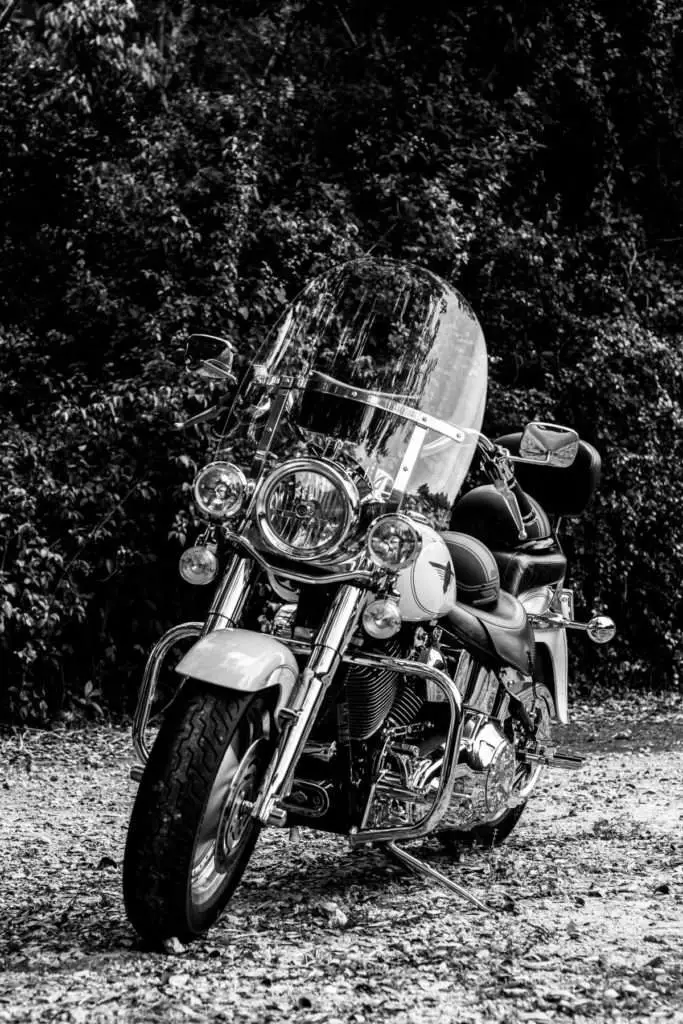
Choosing the right motorcycle for you is a multi-step process. You have to make sure that whatever motorcycle you chose fits your needs and feels comfortable because you’ll most likely be riding on it a lot.
The most highly recommended way to know which motorcycle will fit you best is to go to a motorcycle dealership and physically sit on a few. It’ll allow you to get familiar with the weight distribution of the bike and allow you to try multiple models. There will also be an expert close by to answer any questions you may have.
Choosing the right engine size is also important. Depending on the type of bike you want, a larger engine doesn’t necessarily mean more fuel and better performance. If you plan to only use your motorcycle to commute a short distance, a larger engine is wasted weight.
How to Adjust Your Motorcycle
If you can’t find an already existing motorcycle that will fit what you need, go with the one that’s closest to what you’re looking for. There are fortunately a few modifications you can make to make your bike more comfortable and fitting for you.
The first thing you should do is adjust the suspension to fit you. The motorcycle suspension is what controls the braking abilities and the bike’s ability to handle driving over bumps and cracks in the road. The general rule of thumb is that the higher the motorcycle is off the ground, the higher the suspension is.
A suspension that’s too high can cause you to be unable to reach any of the mechanics to work the bike. But a suspension that’s too low can cause you to hunch or squat on the bike uncomfortably. Talk to an expert about adjusting the suspension, replacing it with one that fits you better, or raising and lowering the motorcycle to fit your height and weight.
Another way you can adjust your motorcycle is to just replace the seat. Swapping out a seat that has less padding and a different shape can make all the difference for how comfortable you feel on a motorcycle. It can also make a difference in the height of the seat, bringing you closer to the controls and increasing your safety as well as your comfort.
Why is an Ill-Fitting Bike Dangerous?
An ill-fitting motorcycle can cause you to become unbalanced as you’re riding it. When you are going at high speeds and controlling something that weighs significantly more than you, this can have some deadly consequences. It’s dangerous to have a bike you can’t balance because of a thrown off weight and height equilibrium. It can cause you to lose control of your bike and crash into multiple road hazards around you. And since you are more exposed on a motorcycle, the chances for injury and death are also significantly heightened.
You also might not be able to reach the controls of a motorcycle if it’s too high for you. You might not be able to reach the controls in time, which can also result in accidents. If you find yourself straining to reach the foot or hand controls, you will need to find something that you can reach comfortably.
Heavier Motorcycles Outweigh Lighter Ones
Literally and figuratively speaking, a heavier motorcycle is more beneficial than a lighter one. It can provide a lot of benefits that a lighter motorcycle is unable to provide. But making sure that you look at every available option is a worthwhile investment.

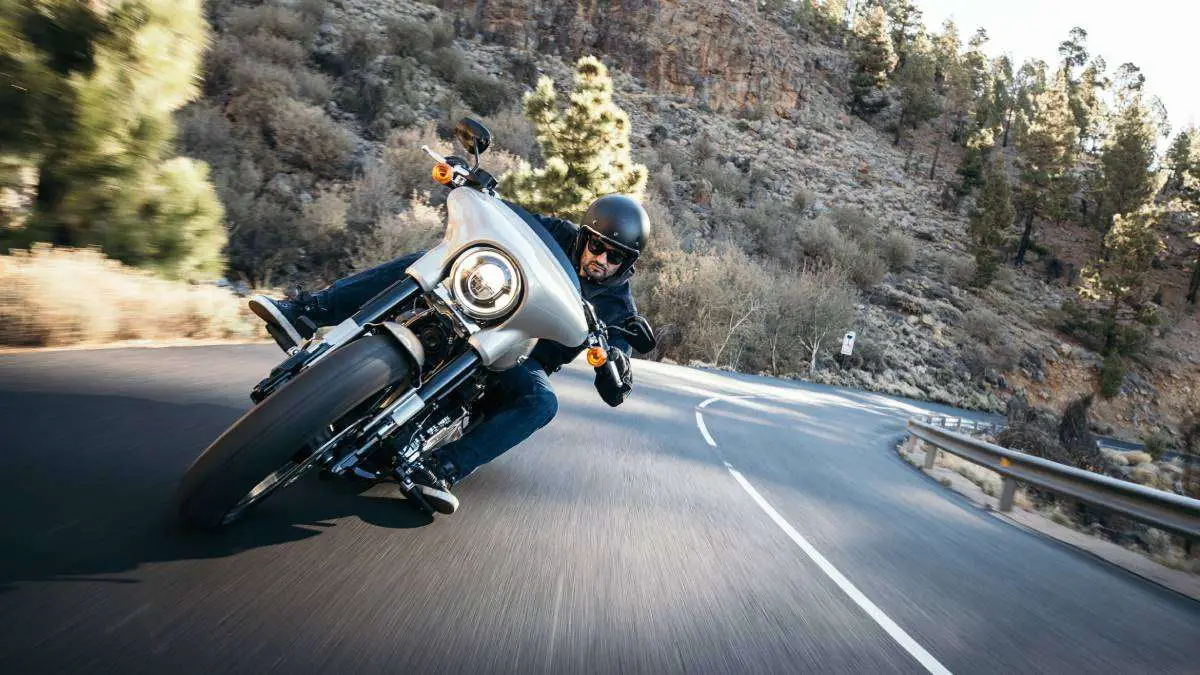
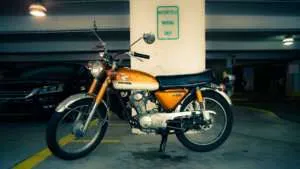 The Best Motorcycle Storage Boxes And Covers
The Best Motorcycle Storage Boxes And Covers  Choosing The Best Motorcycle Jacket: A Buying Guide
Choosing The Best Motorcycle Jacket: A Buying Guide 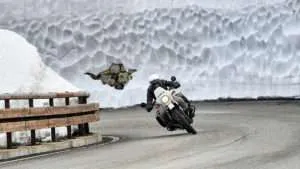 Do Heated Motorcycle Gloves Work?
Do Heated Motorcycle Gloves Work? 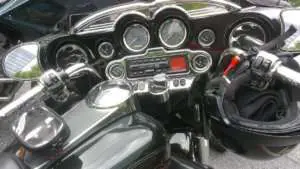 Do Motorcycles Have Radios? Do They Make Riding Better?
Do Motorcycles Have Radios? Do They Make Riding Better? 